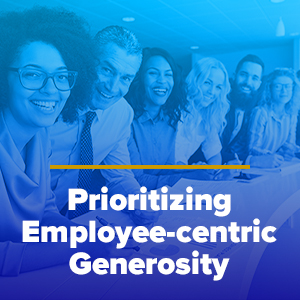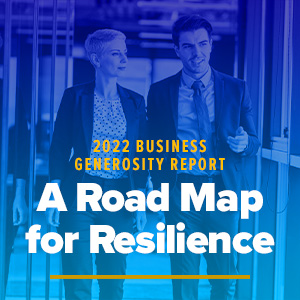Chapter One:
Generosity Tied to Core Business
Generosity’s relationship to the bottom line
The trend line is clear. Year over year, business executives find increasing ROI for generosity. This year’s data reveals exponential leaps in adoption and attitude of business generosity strategies into core business.
Business executives’ responses indicate overwhelming agreement that business generosity efforts impact key measures of long-term business sustainability. Back in 2019, only 43% of executives said generosity significantly impacted core financial measures. In 2020, 64% executives said generosity played a critical role in overall business health.
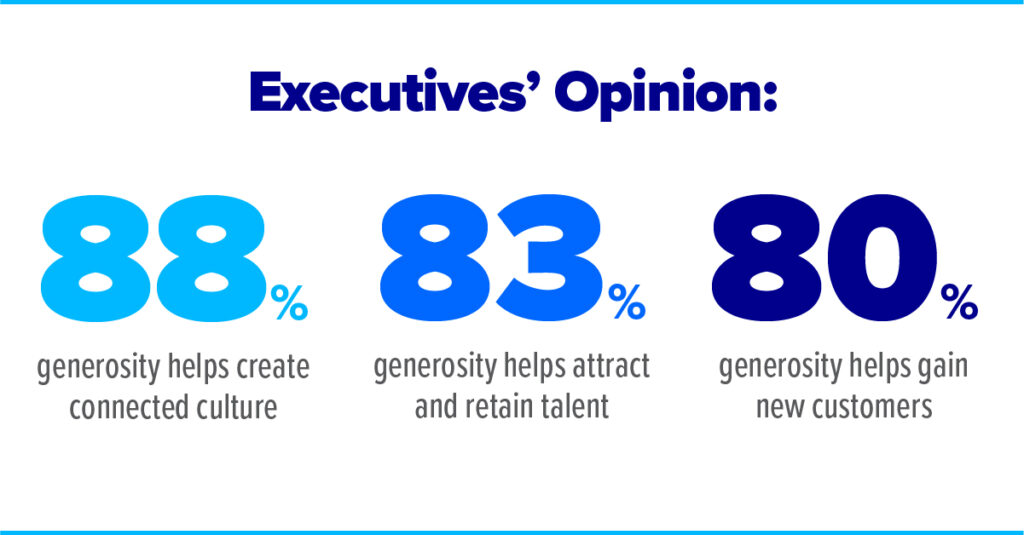
Today, 81% of executive respondents say that generosity makes their business more resilient. 80% of executives tie generosity efforts directly to revenue generation, i.e. gaining new customers. 83% agree that generosity helps them attract and retain talent and 88% of executives agree that generosity helps them create the connected, engaged culture that keeps talent.
When we asked Georgia executives, only 1% of respondents said that business generosity is a temporary requirement because of the pandemic. In fact, 86% of executives named business generosity as either an important way of operating a company (57%) or the future of sustainable business (29%). In fact, the majority of executives claimed they are actually enthusiastic about the impact leading with generosity can have on their business (51%). Only 2% expressed feeling pressured to do things that aren’t core to their business.
Generosity’s influence on employees’ decision to stay
goBeyondProfit’s study confirms many executives’ fears that employees are looking for greener pastures with 30% of employee respondents saying they are likely to leave their current job in the next six months.
However, generosity efforts can play a role in helping them stay as generosity continues to rise in importance across employee demographics. In 2019, only the younger cohort of employees (under 35) felt strongly that generosity factored into their decision to work for or stay with a company. By 2021 that number rose, with 60% of all employed adults saying generosity influenced their employment preferences. In this year’s study, a strong number of respondents (63%) say that generosity efforts influence their decision to stay with their current employer. The vast majority (75%) of employed adults claim that it’s very or extremely important to work for a company they perceive as generous, with an additional 20% considering it moderately important.
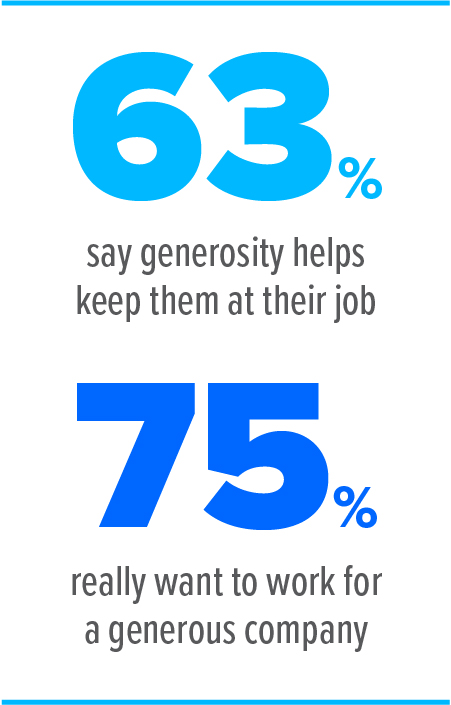
In fact, women find generosity a far more compelling factor than their male counterparts. Generosity plays a more significant role in employment decisions of younger employees (under 35) and those of color, but what they are looking for in terms of how a company demonstrates generosity is considerably different. (See Chapter Four)
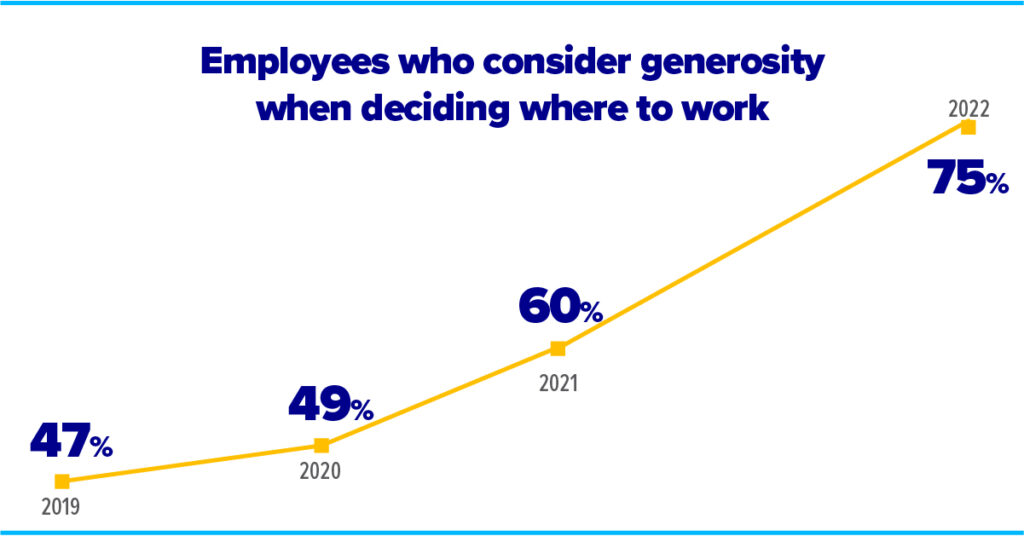
This year’s data shows generosity’s steadily increasing relevance to the core of business. But expectations for how a business demonstrates this generosity to stakeholders has evolved.
In the following chapters, we dig into specifics in order to clarify and define generosity in terms of specific, implementable tactics. You will find concrete actions that define what generosity toward employees looks like versus those actions that define generosity toward the community.
Explore further insights:
In Partnership with


